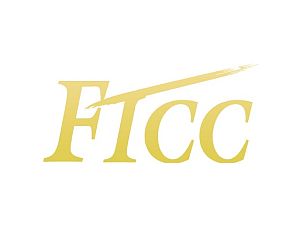One place where organizations may be able to get more bang for their buck is in how they are producing or procuring video. Video is an expensive medium and video services departments are often hard-pressed keeping up with the multiple demands they face.
This is because more and more media-rich information is online, smartphones play video, and video is a key element in digital communications, social media, marketing and customer retention. Given this, it makes sense to evaluate how organizations' video services departments are meeting strategic communications needs - or not.
Some of the areas that video departments are being called upon to serve include:
- Running broadcast channels and providing content for those channels
- Shooting and producing video for marketing, sales operations, and customer how-to's
- Technical and audio services for video connectivity in the organization
- Shooting and producing video of executive presentations in their entirety
- Subject matter of various kinds
- Material for streaming for the web or on social media
With conflicting demands on staff and time, video services departments are often unable to effectively prioritize what should be done first, what's most important, or how content should be produced for multimedia use or distribution on a variety of channels. In many instances, without a strategy for prioritizing production, or an organizing principle, what's left is an ad hoc approach to producing what they are asked to do. This may enable them to keep churning out work, but it may not be an effective use of staff time or resources, or more importantly, advance the organization with its most important audiences. It often also results in content that has a short shelf life and cannot be optimized for rebroadcast or aggregated along with other content in any kind of coherent fashion for thematic programming and viewing.
An additional factor that can come into play is the chain of command for video services. The politics of cooperation or competition between vice presidents in an organization can have a profound impact on what the responsibilities of the department is and which parts are best serviced, versus which has the greatest strategic value. Moving video services from one reporting structure or budget center to another and the way in which it reports on its metrics can significantly impact effectiveness.
One client example with which Coherent Marketing worked was a community college, and you can read more about the project in Projects. The nature of higher education communications aside, the issues with which they are wrestling have many commonalities for a broad number of organizations using video for training, marketing, best practices, client retention, or other uses.
 Fayetteville Technical Community College in North Carolina contracted Coherent Marketing to review operations. The brief was to produce a report that looked at several key areas, including:
Fayetteville Technical Community College in North Carolina contracted Coherent Marketing to review operations. The brief was to produce a report that looked at several key areas, including:
- Could the department produce regular, live video broadcasts?
- How cost-effective are operations?
- How do production choices contribute to the college's positioning and role in the community it serves?
The college broadcasts on a 24-hour community channel, has a modern website, a green-screen studio, and staff with solid skills. In addition to having a responsibility to its local community, it also serves a far-flung military community of students with a global deployment footprint.
We were able to present a range of options to the college. The report included:
- Changes to better meet college strategic needs
- Equipment and personnel needs
- Restructuring plans
- Integration of content and operations for broadcasting and streaming channels
- Parallel operations during transition
- Risk
- Options for more effective use of the channels it has
- Use of video streaming to serve its global military students
- Methods to aggregate and stack content in different ways for re-use
- Cost/minute calculations
The findings and recommendations were well received.
At least every five years, and more frequently at commercial operations, organizations should comprehensively review the operational output, along with the budgetary implications of staff, equipment, and space that are required for effective video production against the organization's strategic communications plan in terms of cost/minute/viewer.
This review should be comprehensive, taking into account who is using the video products, who might be needing digital video products for support, marketing, best practices or internal communications, and whether the organization has the capacity to meet these needs. The department might be better served being in a different location, funded from a different organizational line item, require more equipment or staff - or everything may be working well.
Often there are more effective ways of doing things that directly impact reach and with technology changing at a rapid pace - both production tech as well as methods of distribution - regular reviews are simply good sense.
Our capabilities
The principal at Coherent Marketing has started both national and local digital newsrooms; consulted to national morning TV in Germany; and led statewide community college initiatives, including federally-funded programs. CONTACT US to discuss how we can help your organization's video services department operate more effectively.





Subscribe